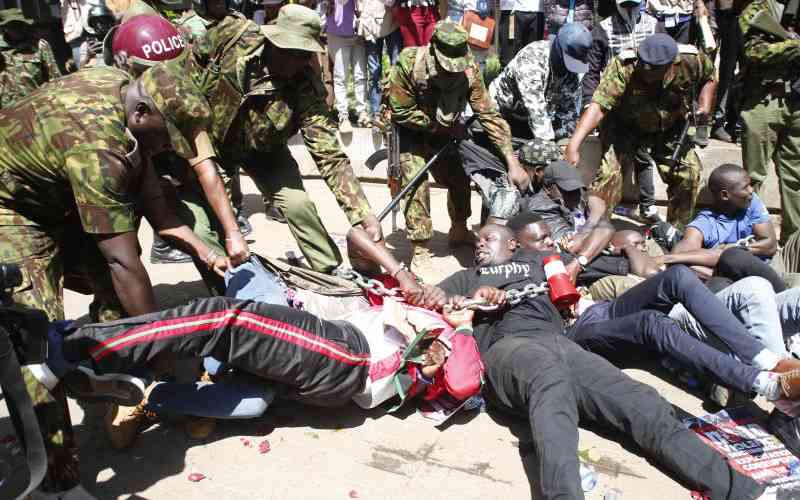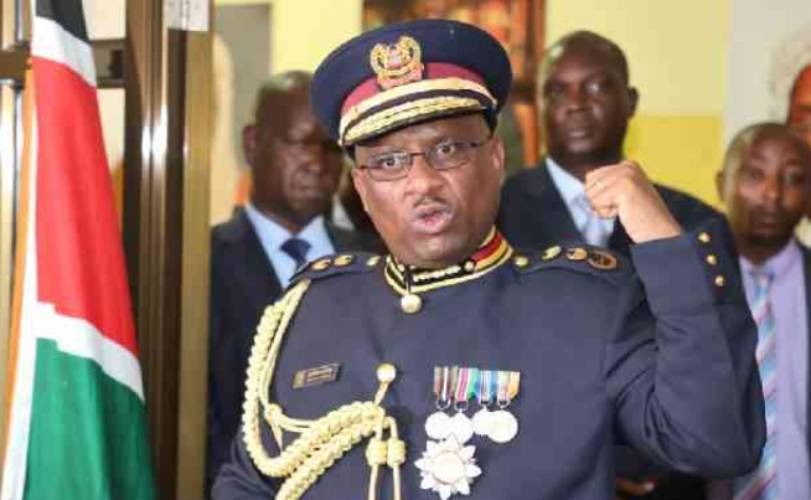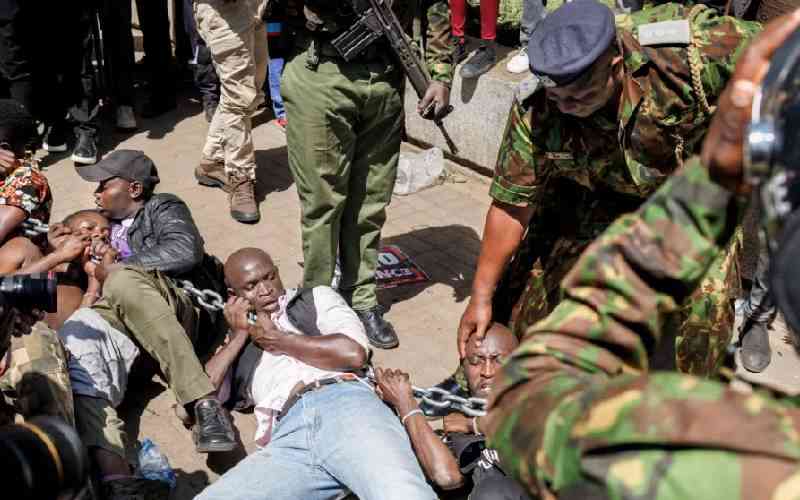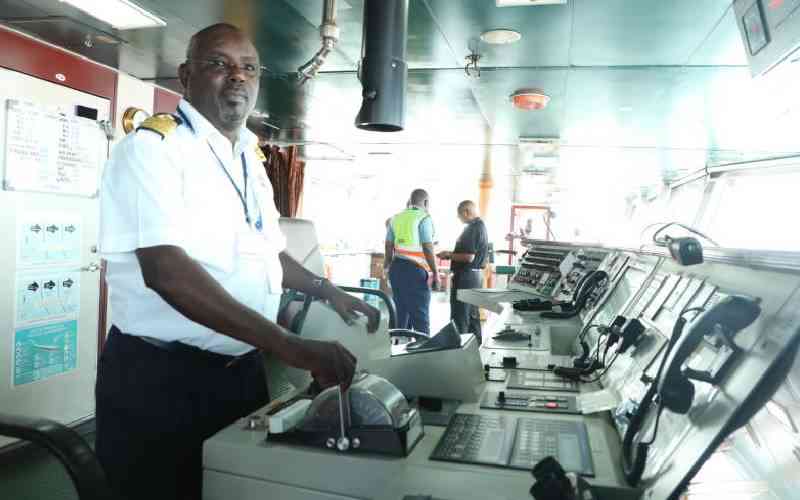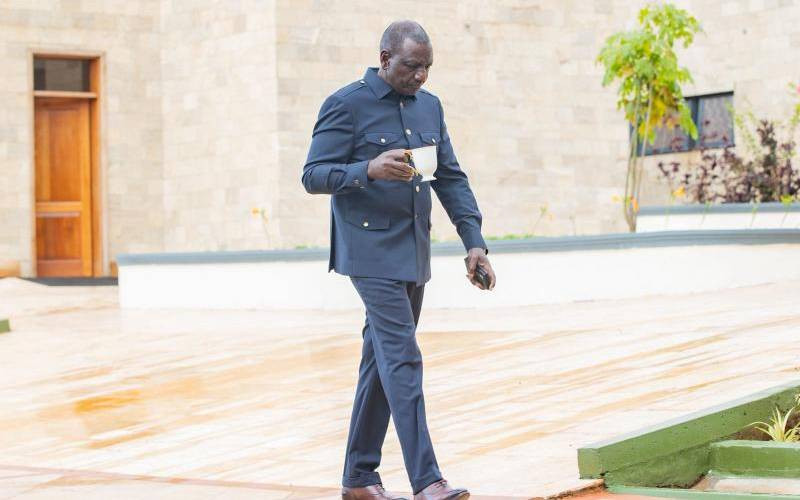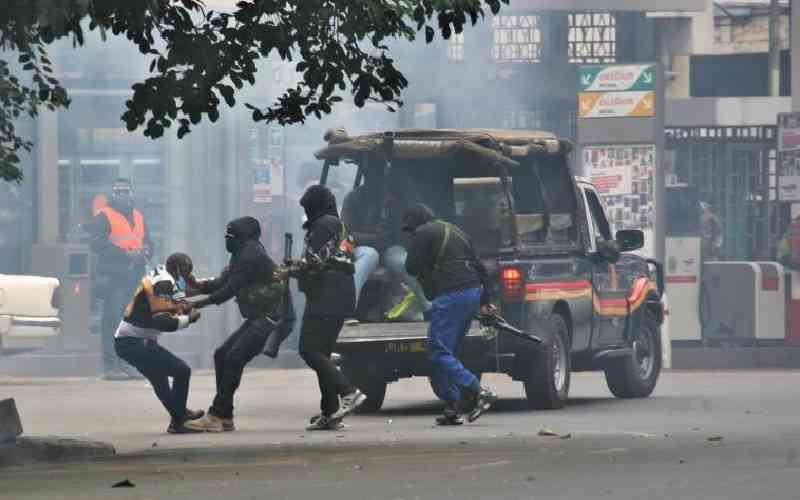On May 3, 2019 the police used excessive force to disperse members of the Kenya Paralympics Team who were holding a sit-in along the Nairobi-Thika Superhighway due to unpaid allowances.
Video footage shows police officers beating them with batons, with one officer -- gun in hand -- seen to roughly handle a protester on a wheelchair.
This incident raises concern on how police responses in dispersing protests consider the needs of persons with disabilities (PWDs). To elaborate, some pertinent questions could be: How do police communicate with blind or deaf persons? How do the police arrest wheel-chair bound persons? How do they distinguish intellectual disabilities from conduct that poses a real risk to public order?
Article 54 of the 2010 Constitution instructs all people, including the police, to protect the rights and freedoms of PWDs by treating them in a dignified and non-demeaning manner.
Additionally, the Bill of Rights guarantees the right to freedom of assembly to every person, which invariably includes PWDs, provided that their conduct is lawful, aligned with the Constitution and relevant statutes. However, this is not the case.
For instance on February 6, 2018 a man paralysed at birth was shot and severely injured by police as they dispersed a protest on the deportation of lawyer Miguna Miguna at Awasi village.
Although the man was not involved in the protest, he encountered the police on his way home and they warned him to move fast away from the chaos. As he turned to run, he was shot on his lower back.
Disability, according to the PWD Act of 2003, is a physical, sensory, mental or other impairment, including any visual, hearing, learning or physical incapability, which impacts adversely on social, economic or environmental participation. It follows that policing practices in managing public assemblies should be prepared for encounters with the different categories of PWDs.
Some practical approaches would be: handcuffing deaf persons from the front; using caution when arresting and transporting wheelchair-bound persons; reading out loud orders to blind individuals; using simple language whilst speaking slowly and clearly to persons with intellectual disability.
Further, when apprehending an individual with a learning incapability, police should recognise that it may take time for the person to understand what is happening. For that reason, police officers should create a calm environment, have one person communicate with the PWD simply and clearly, allow time for the person to respond to questions or instructions, and generally exercise patience. Furthermore, police should collaborate with mental health professionals where they have been alerted that PWDs are involved in a certain crime.
Comparatively, the American Department of Justice issued a publication with frequently asked questions on policing PWDs.
These were categorised in terms of common problems police face when interacting with PWDs and possible remedies such as training, creating sensitivity and awareness, and effective communication tools.
Notably, most of the practical approaches listed above have been tried and tested. The Queensland Police Service (Australia) Disability Service Plan 2017/20, seeks to encourage partnerships between police and PWD advocacy groups and support networks such as their families and care-givers, with the aim of identifying and addressing issues regarding everyday service delivery to PWDs. In the Kenyan context, the Police Reforms Working Group Kenya (PRWG-K) whose main objective is to deepen citizens’ understanding of police reforms at national and county level, should work with experts on PWDs, including researchers, health care professionals, and PWDs in order to develop country-specific guidelines which prepare police for encounters with PWDs when managing public assemblies.
In addition, the National Council for Persons with Disabilities (NCPWD) should be roped into these discussions. The NCPWD lists disability mainstreaming in the public sector as one of its priority areas. The parastatal has been instrumental in ensuring the full operationalisation of the PWD Act of 2003, developing the National Plan of Action on Accessibility for PWDs and the Affirmative Action Policy for PWDs.
Stay informed. Subscribe to our newsletter
- The writer is a research intern at the Centre for Human Rights and Policy Studies, Nairobi
 The Standard Group Plc is a
multi-media organization with investments in media platforms spanning newspaper
print operations, television, radio broadcasting, digital and online services. The
Standard Group is recognized as a leading multi-media house in Kenya with a key
influence in matters of national and international interest.
The Standard Group Plc is a
multi-media organization with investments in media platforms spanning newspaper
print operations, television, radio broadcasting, digital and online services. The
Standard Group is recognized as a leading multi-media house in Kenya with a key
influence in matters of national and international interest.
 The Standard Group Plc is a
multi-media organization with investments in media platforms spanning newspaper
print operations, television, radio broadcasting, digital and online services. The
Standard Group is recognized as a leading multi-media house in Kenya with a key
influence in matters of national and international interest.
The Standard Group Plc is a
multi-media organization with investments in media platforms spanning newspaper
print operations, television, radio broadcasting, digital and online services. The
Standard Group is recognized as a leading multi-media house in Kenya with a key
influence in matters of national and international interest.

